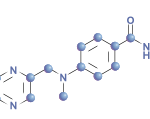Those in the high-dose group were significantly more likely to have achieved a good EULAR response after six months, with a relative risk ratio of 2.65 (P=.004). She noted that the study looked only at the starting dose and didn’t take into account any escalations.
Dr. Fleischmann said the chosen “high” dose of 15 mg is actually fairly low and that 20 mg is a dose more commonly considered high, although a session moderator pointed out that some studies have found that, given orally, there is not much of an increase in the bioavailability of the drug at doses higher than 15 mg.
Ms. Davies said the study focused on the two most commonly prescribed doses in the U.K. and that these were the two most disparate doses that allowed a workable analysis.
“It’s become more common in the U.K. in more recent years to prescribe a 10 mg dose,” she said, “and I’d like to repeat this analysis looking at that group of patients.”
Thomas R. Collins is a freelance writer living in South Florida.
References
- Fleischmann R, Mysler E, Hall S, et al. Efficacy and safety of tofacitinib monotherapy, tofacitinib with methotrexate, and adalimumab with methotrexate in patients with rheumatoid arthritis (ORAL Strategy): A phase 3B/4, double-blind, head-to-head, randomised controlled trial. Lancet. 2017 Jun 15. pii: S0140–6736(17)31618-5. [Epub ahead of print]
- Taylor P, Keystone E, van der Heijde D, et al. Baricitinib versus placebo or adalimumab in rheumatoid arthritis. N Engl J Med. 2017 Feb 16;376(7):652–662.
- Davies R, Lunt M, Barton A, et al. The effect of a low versus high first prescribed dose of methotrexate on EULAR response at six months using data from the RAMS study (abstract OP0225). Annual European Congress of Rheumatology. 2017 Jun 15. Madrid, Spain.

